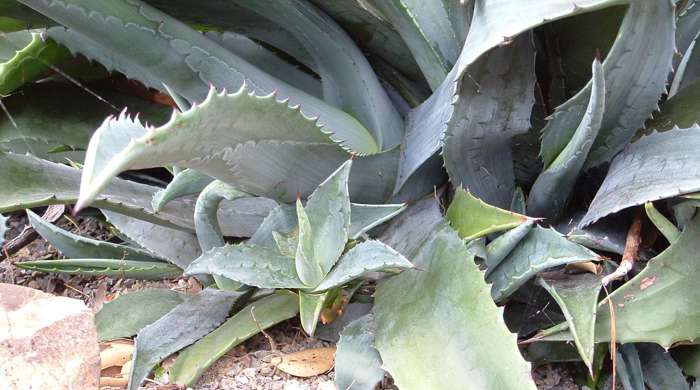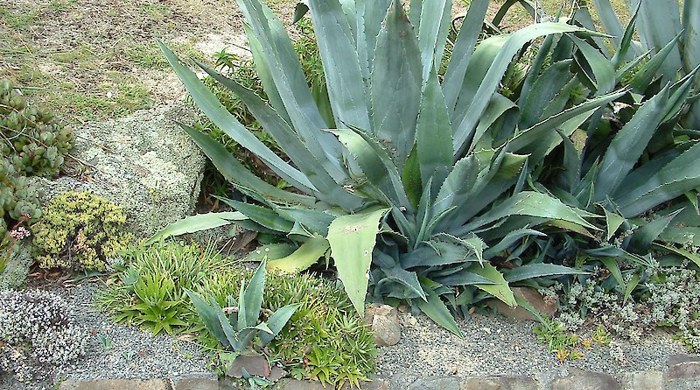Agave americana
Century plant
Family: Agavaceae
Origin: Mexico

Regional Pest Management Plan (RPMP) status
- Whole region — Sustained control
- Hauraki Gulf Controlled Area Notice pest
General description
Succulent perennial. Leaves are fleshy, < 2 m long, sharply toothed, dull green or variegated, and formed in basal rosette. Flowers are yellow and borne on flowering stalk in late summer – early autumn.
Seed capsules are oblong and contain shiny black seeds. Basal rosette dies after flowering and is replaced by several small lateral rosettes.
What you need to know
To help protect our environment, from 1 September 2021, you:
- will not be allowed to breed, distribute, release or sell century plant within the Auckland region.
- will not be allowed to plant century plant within the Auckland region, unless you are transferring an existing plant on your land to another location within the boundaries of the same property.
- must destroy any century plant on land that you occupy if it has been planted in breach of the above rules and you are directed to do so by an authorised person.
Habitats
Coastal ecosystems, sand dunes, cliffs, grasslands, open sites, disturbed sites, roadsides, pasture, open canopy forest.
Dispersal
Sets seed. Vegetative spread from rosettes and stem fragments. Seeds and vegetative propagules dispersed by gravity and water. Human-mediated dispersal through dumping of garden waste and deliberate planting.
Impact on environment
Forms dense patches in coastal ecosystems, suppressing native vegetation.
Control
Site Management
Follow up treated areas 3 times per year. Encourage natural regeneration of native plants or replant treated areas where possible after 2-3 treatments to establish dense ground cover and minimise reinvasion.
Recommended approaches
Physical control
Method: Dig out.
Plant parts requiring disposal: All parts.
Disposal options: Remove to greenwaste or landfill if practical.
Biocontrol
Biocontrol is currently not available for this species.
Community agrichemical control recommendations
Basic Growsafe certified:
For small infestations: Foliar spray with 3g metsulfuron-methyl plus 150ml glyphosate per 10L of water.
Certified Handler/Experienced agrichemical user:
For medium to large infestations: Foliar spray with 3g metsulfuron-methyl plus 150ml glyphosate per 10L of water and 10ml penetrant.
Safety notes
Plant has spines that can cause injury. The sap is moderately toxic and will cause significant irritation to skin if exposed. Protective clothing (gloves, full length clothing and glasses) should be worn when removing plant. If sap ingested, seek medical attention.
Caution: When using any herbicide or pesticide please read the label thoroughly to ensure that all instructions and safety requirements are followed.





